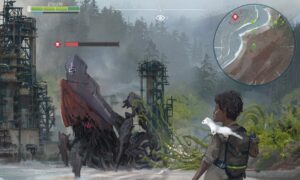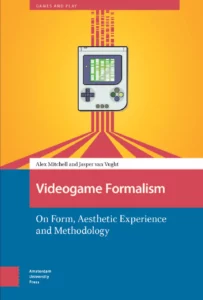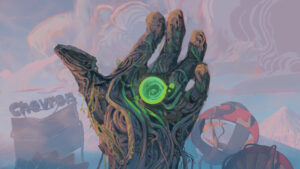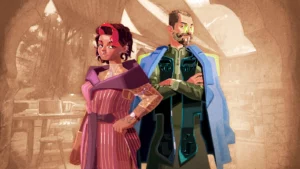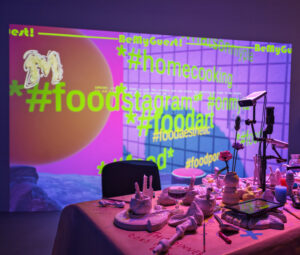Old games don’t play on modern equipment. To retain this part of our cultural heritage, we took action.

Between 2015 and 2017, a collaborative project between Utrecht University researchers and the Netherlands Institute for Sound and Vision set out to create the first unified effort between game research, cultural heritage institutions and the Dutch game industry to preserve Dutch games as national cultural heritage. What started out with a Focus Area seed money grant eventually turned into a larger NWO Museum Grant project with the name Game On!.
The aim of the research project was to think about how the complex nature of digital games informs archival policy and practices for cultural heritage preservation and presentation. To that extent, we were interested in questions like: How can we define and approach the history of Dutch digital games? What should a preservation effort of Dutch digital game heritage include (and therefore also exclude)? What does the selection policy look like to preserve and archive such material? How can the digital game heritage be open up to both the the general public and to specialist groups?
Over the course of the project, a lot of these questions converged in our growing awareness of the need to focus on documenting play as a preservation strategy rather than collecting and presenting games as objects. This aligned with what scholars in the field of game preservation has already pointed out: to preserve games as socio-cultural phenomena, shaped over time by both developers and especially players, will require a focus on preserving play as well.
Authentic experience
This realization led us to experiment with a novel way of documenting gameplay in the form of Let’s Play videos. Even though there are many styles of Let’s Play videos, in most cases Let’s Play videos are disorderly, unstructured recordings of play – rather than dedicated play sessions showing off skill – and rely on the often humorous commentary to offer a more free-flowing, “authentic” experience of playing a game. Currently, the Let’s Play video is one of the most popular online video forums, with several Let’s Play channels ranking among the most subscribed to on YouTube. As such, the Let’s Play video has become a prominent way for players to engage with games, both in terms of creating such videos or by watching others play.
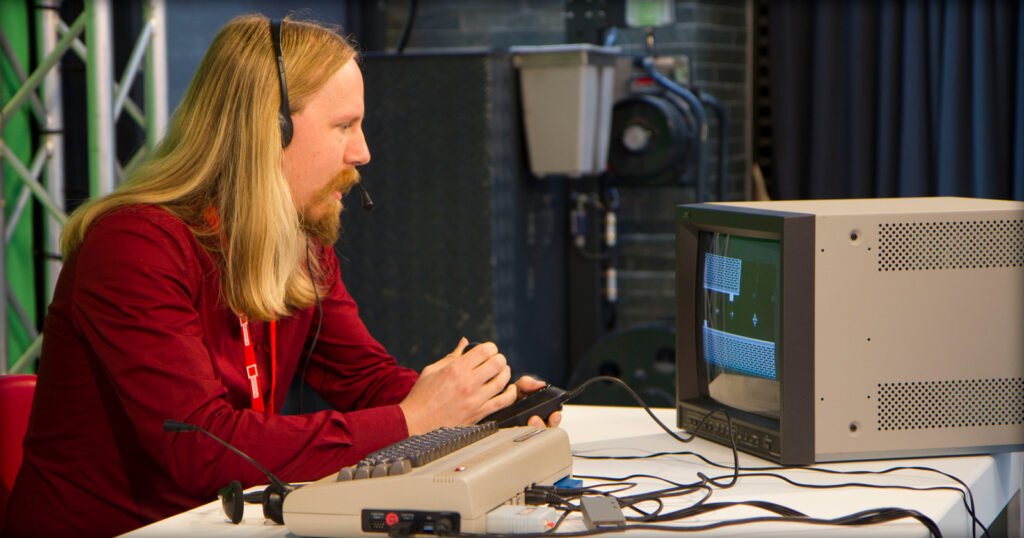
For the purpose of game preservation, we argued, Let’s Play videos have the potential to provide a viewer with a sense of playing in a more direct or engaging way than a regular gameplay recording would. We proceeded to create a small Let’s Play recording studio in the Museum of Sound and Vision within a larger “Let’s Play!” exhibition set up by the project’s research intern Hugo Zijlstra. Here, we encouraged museum visitors to record their own gameplay of old Dutch games like Radarsoft’s Eindeloos (a side-scrolling, maze-like shooter, 1985) or Topografie Wereld (an educational game with the aim of learning topography, 1984). These videos then became part of the exhibition and were also put online on a dedicated YouTube channel.
Commodore 64
Within this Let’s Play setup, we were particularly interested in seeing how players nowadays negotiate and discuss the semantics and mechanics of older games. In that respect, we intended to move beyond an idealization or recreation of an ‘original experience’ of playing these games. While the players did engage with the games on an original Commodore 64 console, we wanted to explore the new interpretative frames that players brought to these older games so that we could understand what kind of games they are now. How do players, for instance, highlight or negotiate the social, cultural, and technological significance of older Dutch games from a contemporary perspective? And can it help us understand video games as a developing medium by drawing historical connections that can shine a new or different light on this now well-established medium?
History of play experiences
In the end, our project yielded various interesting results with regards to both the preservation and presentation of older games. The Let’s Play videos for instance highlighted the potential for creating a history of play experiences, where new encounters with old games provide a renewed understanding of the games’ historical significance. They also provided insight into the importance of the materiality of the gameplay experience, with players comparing their experiences with old hardware to contemporary consoles. It also confronted players with their own game literacy, or lack thereof, as they noted how playing these games met or defied their expectations. These results have yielded interesting insights into games as forms of cultural heritage, which go well beyond merely preserving the games as objects themselves.
The results of the project were presented at a symposium the research team organized at the Institute for Sound and Vision called Let’s Play Dutch Game History and were subsequently published. While the collaboration between Utrecht University and the Netherlands Institute for Sound and Vision continues, the GAME ON project wrapped up during the summer of 2017.


